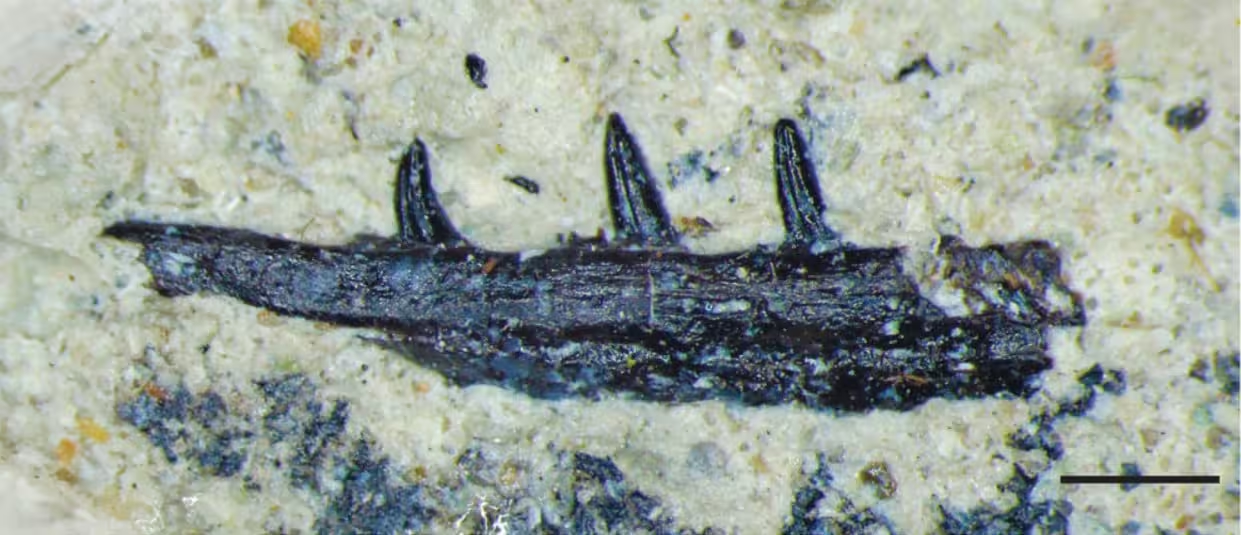American researchers discovered a fragment of the lower jaw of a unique animal in Late Triassic sediments in Arizona. However, several teeth of the extinct creature were also preserved, and the characteristic grooves on their surfaces told paleontologists that they were dealing with a poisonous lizard.
Among the many different means for hunting and protection in animals, poison can be called particularly exotic. This adaptation is found in both some birds and cephalopods, tropical frogs, and many reptiles. Poisonous snakes immediately come to mind: their fangs have special channels through which the toxin enters the victim’s wound. A similar device of the poisonous apparatus can be found, for example, in the poisonous tooth, whose name speaks for itself. Komodo dragons act differently: Their toxins complement the already dangerous teeth and claws, causing shock and preventing the victim’s blood from clotting.
Some extinct ancestors of modern reptiles possessed such weapons. Huachitodon is considered the oldest of the venomous lizards discovered (uatchitodon) is a Late Triassic reptile that lived approximately 220 million years ago. Only its teeth were found, but their structure, that is, the grooves on the surface of the teeth, told paleontologists that the animal’s bite was poisonous.
The same grooves were found on canine teeth. Sphenovipera jimmysjoyi — An extinct representative of cuneiform writing that lived in the middle of the Jurassic period. By the way, its last living relative is Hatteria.
magazine lately PeerJ published a description of a unique find of poisonous teeth of a previously unknown reptile species. American paleontologists discovered a fragment of the lower jaw of an extinct lizard in Arizona, on which several teeth were preserved. Experts eventually recognized channels that serve to distribute poison into the victim’s wound.
According to researchers, the animal found belongs to the subclass of reptiles. in diapsidahowever, due to the lack of fossil evidence, it is difficult to determine a more precise position on the phylogenetic tree. But some features of the structure of the jaw and three teeth (their size does not exceed 0.8 millimeters) allowed paleontologists to attribute the find to a new genus and species.
They named the panther Microzemiotes sonselaensis – The first part of the name consists of the Greek words “little” and “punisher”, the second comes from the name of the geological formation in Arizona, where the sample was found. The age of this place shows that: M.sonselaensis It lived 217.7-213.87 ± 0.078 million years ago, that is, in the Norian layer in the upper part of the Triassic period.
The lines on the lateral surfaces of the three teeth indicate that the discovered animal used poison for hunting or protection. It cannot be assumed that they appeared due to destruction, since the enamel was preserved there. The tapered and curved shape of the teeth is most closely related to the currently living Arizona poison tooth (Suspicion of heloderma), was also called the “Gila monster”.
The authors of the article assumed that the method of delivery of poison in the new lizard is the same as in poisons, so poisoning can occur passively with long bites, that is, the prey can be captured for about an hour. Paleontologists did not ignore this M.sonselaensis They could have coexisted with Ouachitodon, although these reptiles had different hunting strategies. Huatchitodon’s teeth allowed it to cut through the body of its prey, and a recently discovered predator likely pierced it.
Moreover M.sonselaensisIt was probably a fairly small animal—slightly larger than a mouse—and preyed on equally small vertebrates or insects. The latter indirectly confirms the wear of the tooth tips: they may have rubbed against the chitin exoskeleton.
Source: Port Altele
